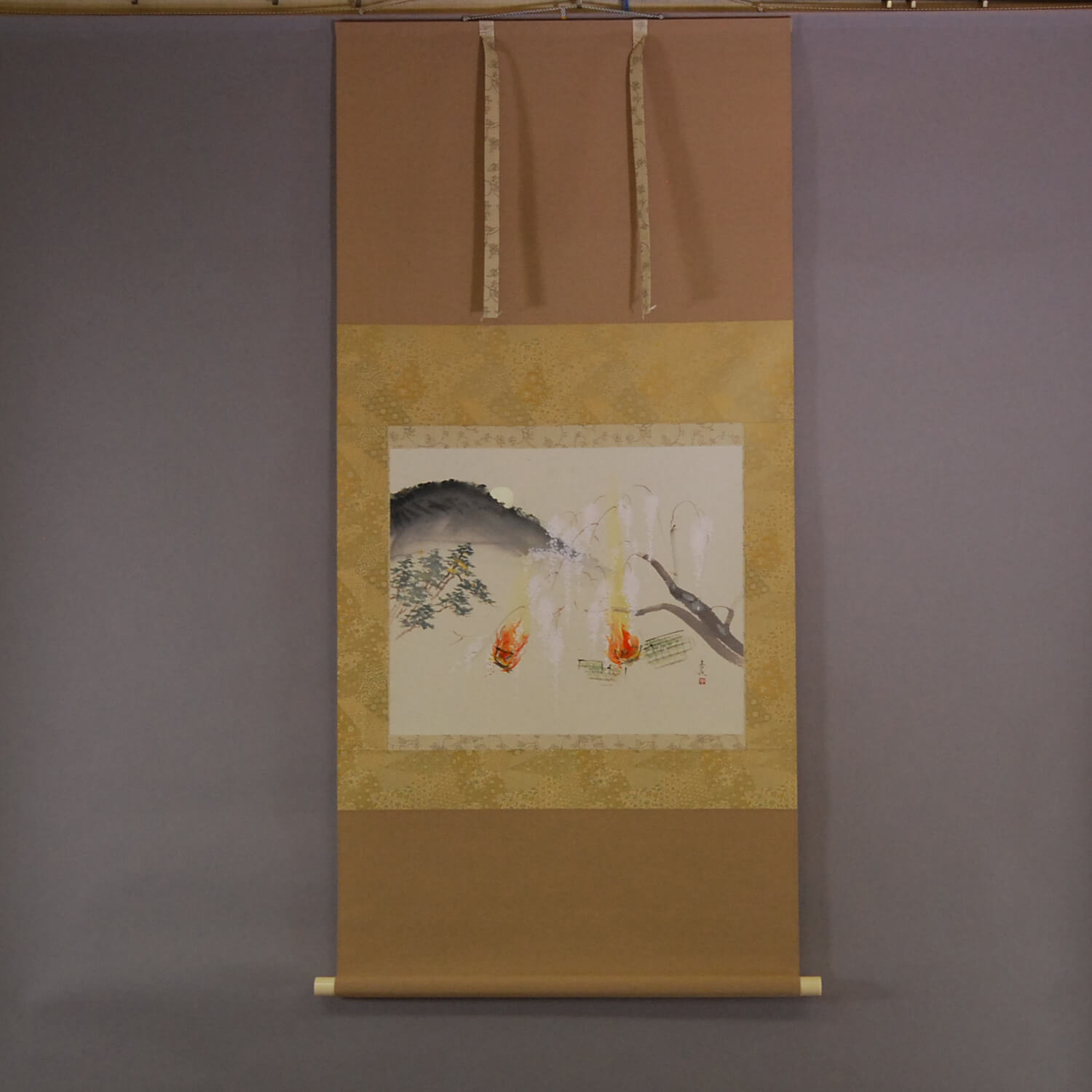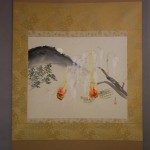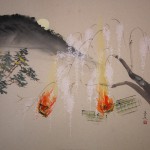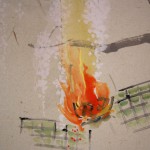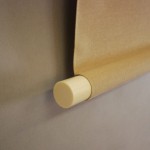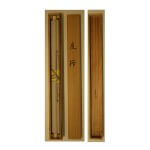Products Lineup
News / Blog
Other Menus
Kakejiku Hanging Scroll: Cherry Blossoms at Night / Seika Tatsumoto - Yozakura
- Product ID
- 0066
- Name
- Seika Tatsumoto
- Profile
1935-
A Japanese-style painter
Born in Kyoto- Size
- 725mm x 1450mm
- Roller End Material
- Artificial ivory
- Material of the Work
- Japanese paper
- Price
- JPY 80,000
- Stock Condition
- In stock
- Payment: Click the Paypal Mark
- Duty and Taxes
Import duty and taxes are beyond our control and may apply to your shipment. Please noted that these fees are the responsibility of the buyer.
- Description
During the cherry blossom season, we can see cherry blossoms in full bloom everywhere, even at a crossroad of a backstreet in Kyoto. Kyoto is indeed the flowery capital. The weeping cherry blossoms in Maruyama Park and in the Shirakawa-douri Street of Gion are especially beautiful. Seika Tatsumoto often paints the weeping cherry blossoms in Maruyama Park against the background of the moon hanging over Mt. Higashi. Seika Tatsumoto depicts the weeping cherry blossoms hanging on the “kagaribi” (bonfires) with his free and fluid brushwork. Whenever I think of the cherry blossoms at Gion (a district in Kyoto), I remember a “haiku” (Japanese poetry) written by Akiko Yosano (1878-1942), who is one of the most famous and controversial post-classical female poets in Japan.
“On the way to Kiyomizu, the cherry blossoms at Gion are illuminated by the moonlight, and everyone I see tonight is all so beautiful.”
I feel as if the painting expresses the meaning of this phrase.
kagaribi
A fire that is made in an iron basket in the open airhaiku
A Japanese poem in 17 syllables having a 5-7-5 syllabic form and traditionally containing a reference to the seasons

